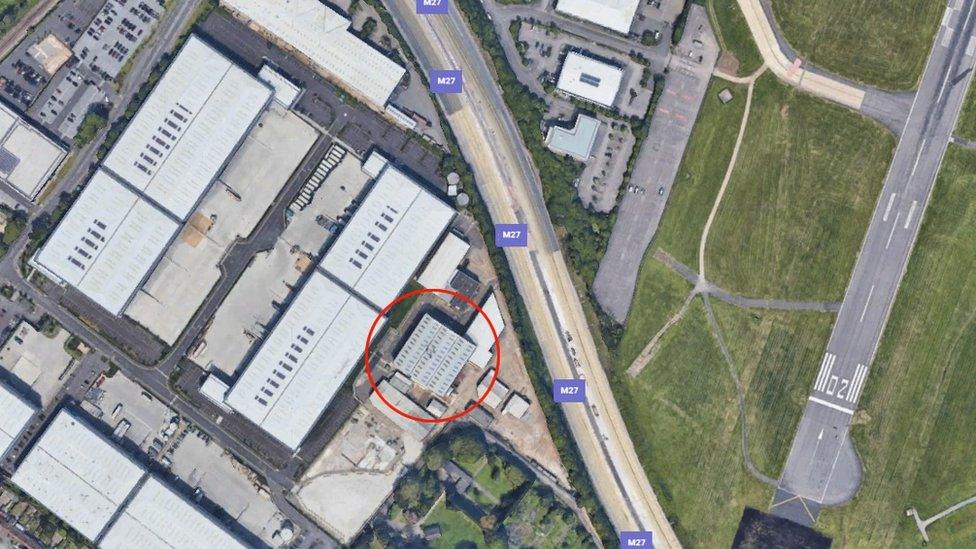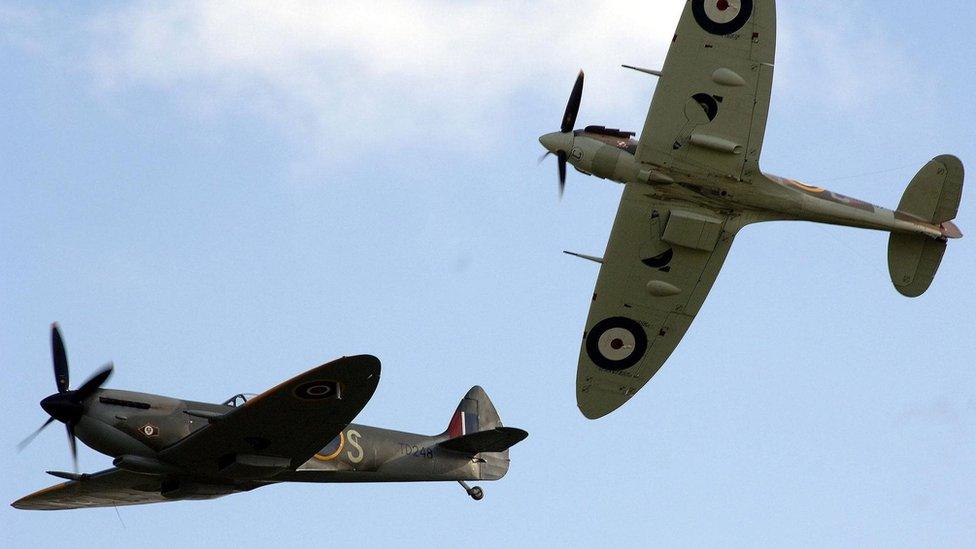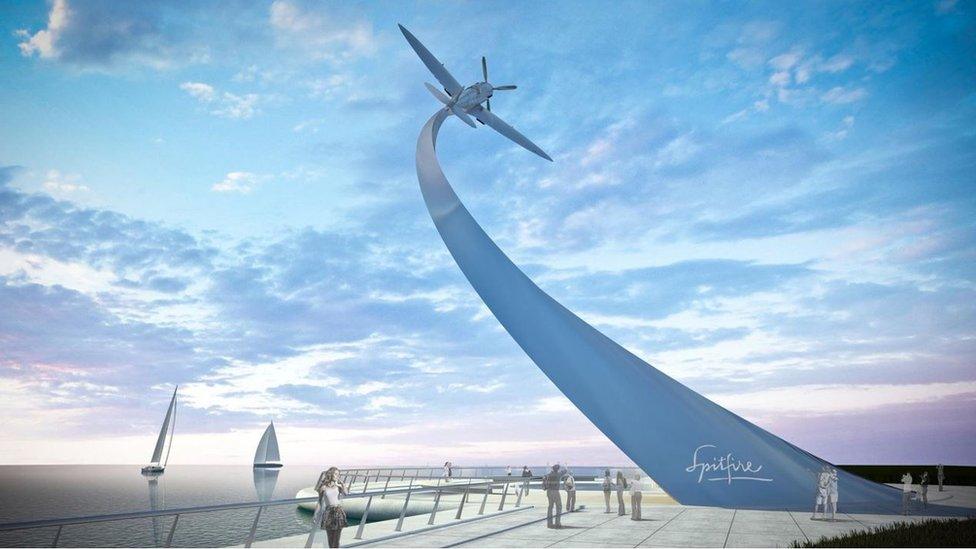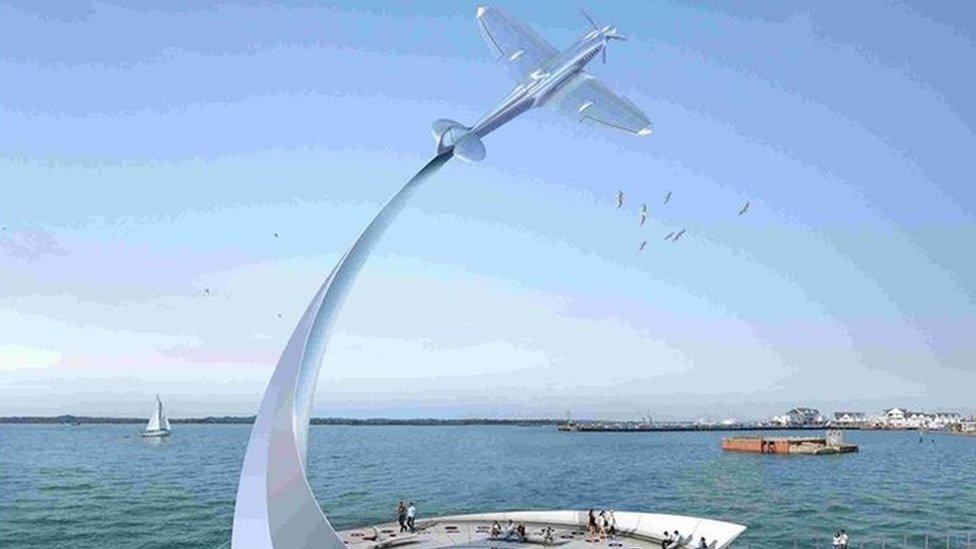Southampton Spitfire Flight Shed demolition under way
- Published

The Flight Shed was separated from the airport by the M27 motorway
Work to demolish a building used to test wartime Spitfires is under way.
The Flight Shed, on an industrial site near Southampton Airport, is being turned into four new industrial units.
But campaigners are hoping to halt the work as they have applied for the building to be granted listed status.
The plans for the redevelopment of the site were approved by Southampton City Council at the end of last year despite more than 50,000 people signing a petition against the shed's demolition.
In a statement, the authority said: "Although an official decision on the listed status of the building is outstanding, Historic England have previously advised that the building is likely to have been too altered to satisfy the listing criteria and have been kept updated regarding the works taking place on site."
On the basis of that information, it added a building preservation notice had not been issued.
However, local historian Dave Key said the council could have halted the works by issuing the notice.

Tractors were used to tow the Spitfires from the Flight Shed to the nearby airfield
Mr Key put the application for listed status forward with support from the Spitfire Makers Charitable Trust.
"We are still trying the best we can," he said, adding: "It is important that we retain our heritage."
Plans for the redevelopment of the site were tabled by Carbide Properties Limited.
The building, near Wide Lane, was used for final checking of completed Spitfires before they were delivered to the RAF.
The site was later used by the Ford Transit factory.
A condition of the planning permission was for the building to be recorded ahead of demolition.

The Supermarine Spitfire

The Spitfire was designed by Reginald Mitchell at the Supermarine factory in Woolston, Southampton
The prototype was first flown from Eastleigh Aerodrome, now Southampton Airport, on 6 March 1936
After Mitchell died in 1937, his successor Joe Smith developed the fighter to make it faster and more powerful
The aircraft entered service in 1938 with the RAF, which initially ordered 310 of them from the Woolston works
The site was bombed in 1940 at a time when most Spitfire manufacturing was being switched to a more modern production line at Castle Bromwich, near Birmingham
Spitfires shot down a total of 529 enemy aircraft, for a loss of 230 of their own

Follow BBC South on Facebook, external, Twitter, external, or Instagram, external. Send your story ideas to south.newsonline@bbc.co.uk, external.
Related topics
- Published3 November 2021

- Published19 August 2021

- Published22 July 2021

- Published10 March 2020

- Published28 March 2017
